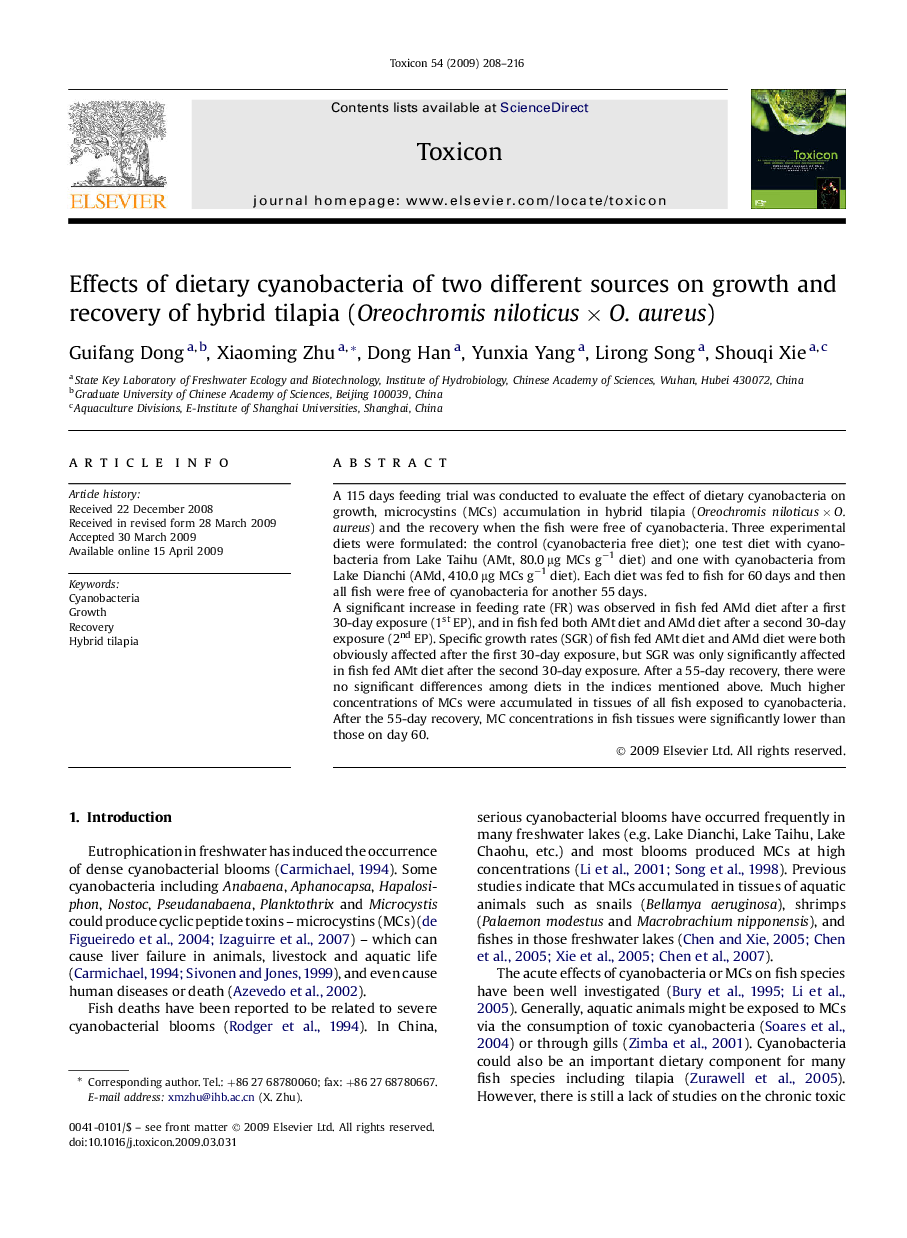| Article ID | Journal | Published Year | Pages | File Type |
|---|---|---|---|---|
| 2066420 | Toxicon | 2009 | 9 Pages |
A 115 days feeding trial was conducted to evaluate the effect of dietary cyanobacteria on growth, microcystins (MCs) accumulation in hybrid tilapia (Oreochromis niloticus × O. aureus) and the recovery when the fish were free of cyanobacteria. Three experimental diets were formulated: the control (cyanobacteria free diet); one test diet with cyanobacteria from Lake Taihu (AMt, 80.0 μg MCs g−1 diet) and one with cyanobacteria from Lake Dianchi (AMd, 410.0 μg MCs g−1 diet). Each diet was fed to fish for 60 days and then all fish were free of cyanobacteria for another 55 days.A significant increase in feeding rate (FR) was observed in fish fed AMd diet after a first 30-day exposure (1st EP), and in fish fed both AMt diet and AMd diet after a second 30-day exposure (2nd EP). Specific growth rates (SGR) of fish fed AMt diet and AMd diet were both obviously affected after the first 30-day exposure, but SGR was only significantly affected in fish fed AMt diet after the second 30-day exposure. After a 55-day recovery, there were no significant differences among diets in the indices mentioned above. Much higher concentrations of MCs were accumulated in tissues of all fish exposed to cyanobacteria. After the 55-day recovery, MC concentrations in fish tissues were significantly lower than those on day 60.
